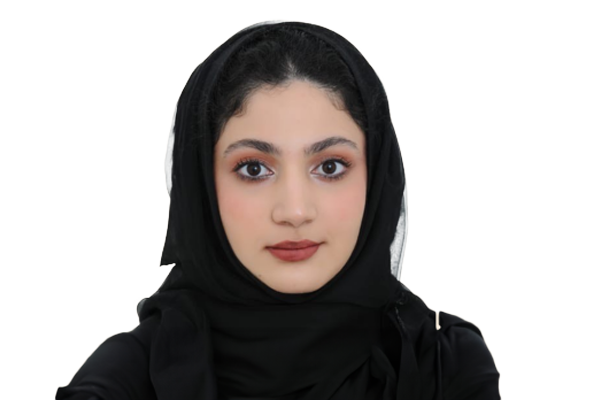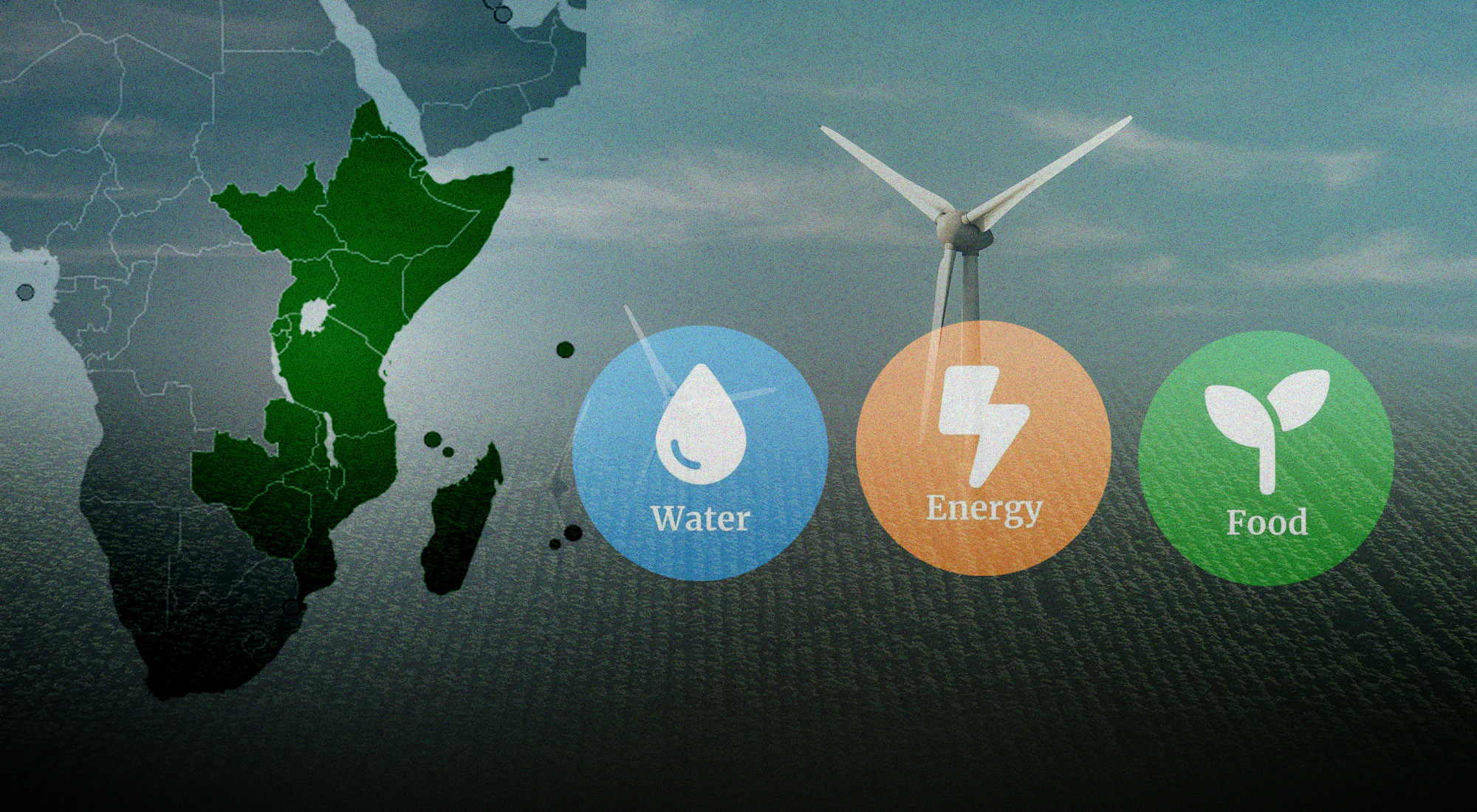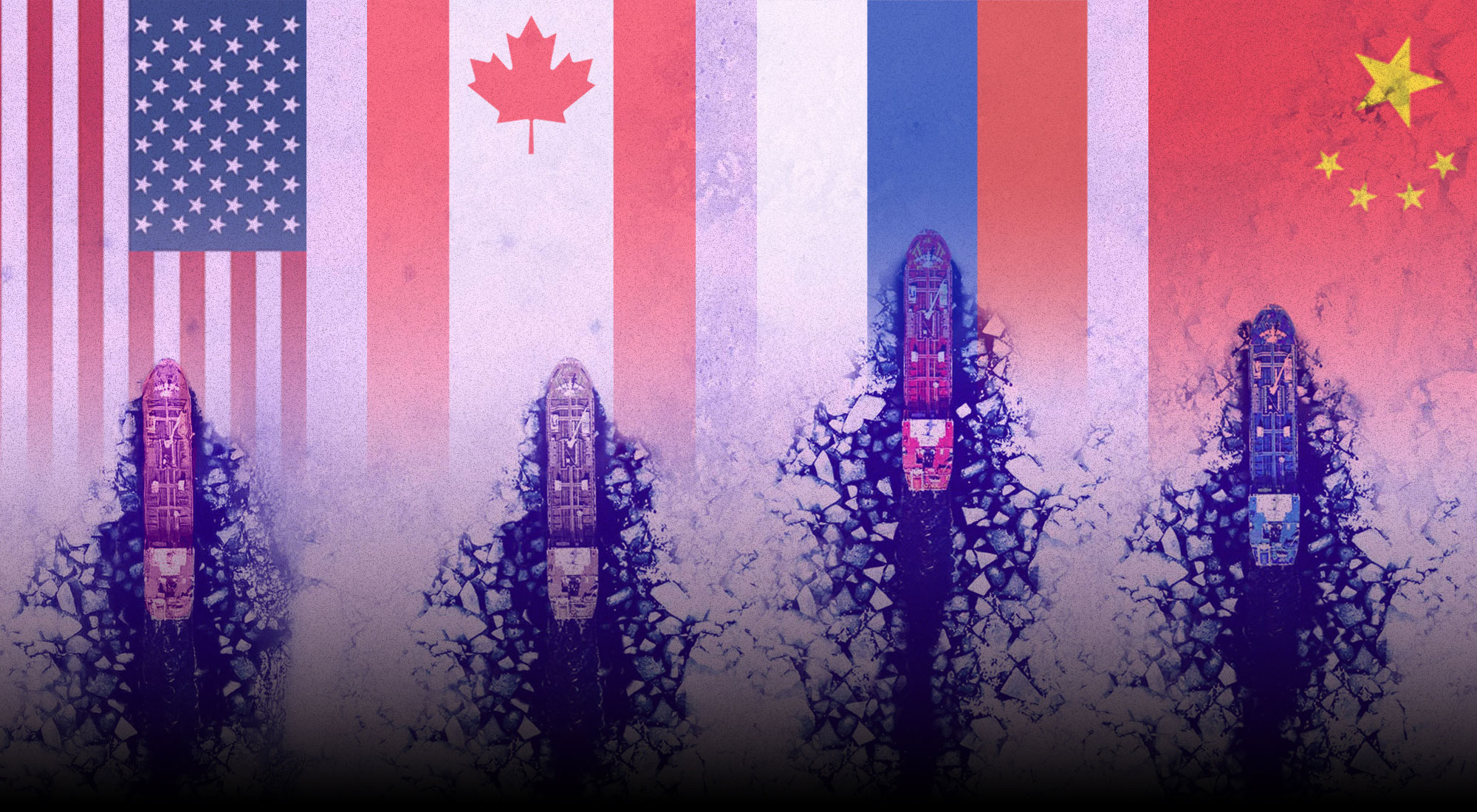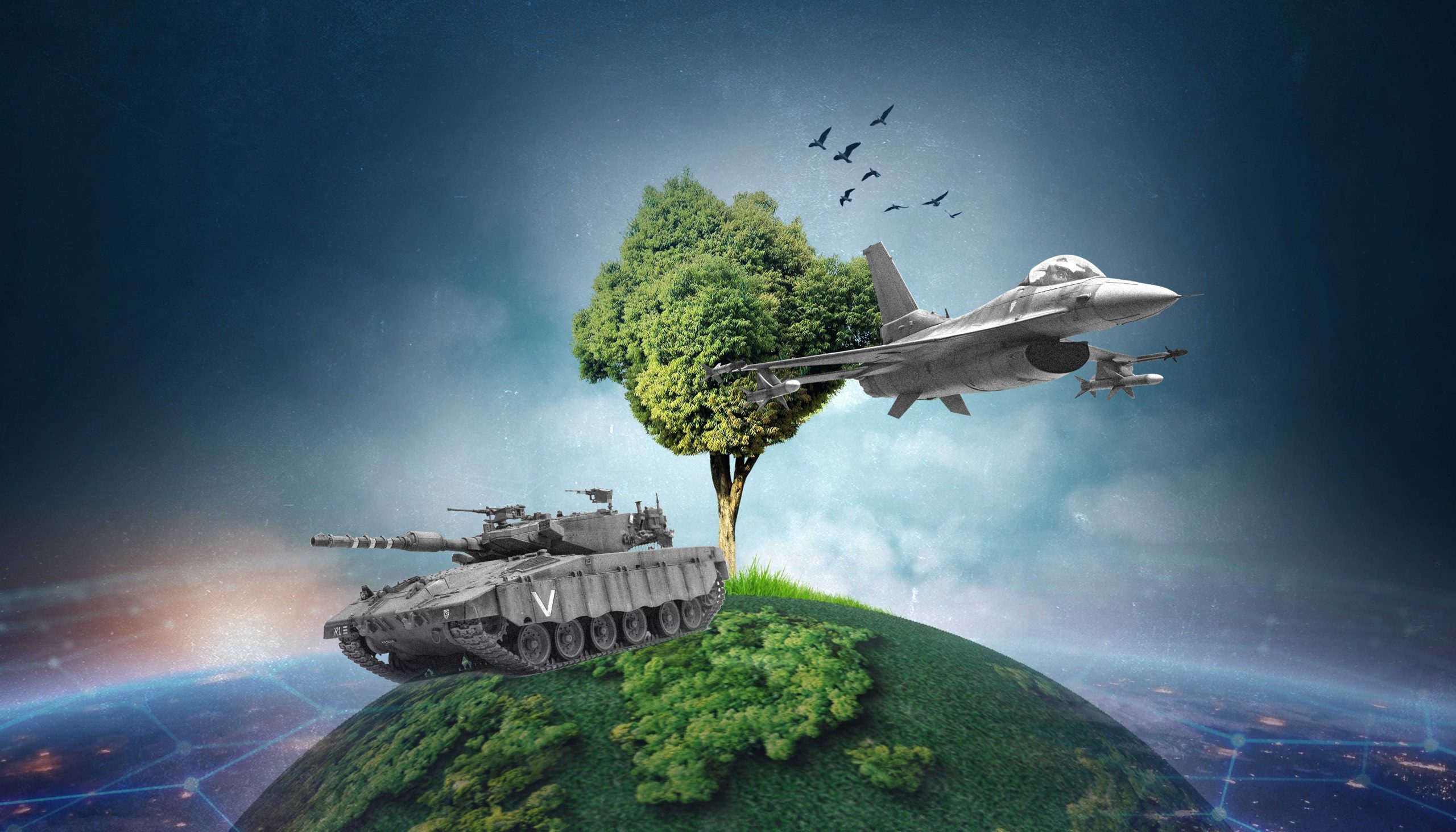Introduction
Climate change is one of the most pressing issues of our modern day and age. It is defined as the long-term change in the Earth’s average climatic conditions, including changes in temperature and precipitation patterns [1]. The effect this has on our environment is clear; however, there is also an evident effect on human security. According to the UNDP, human security is the wellbeing of people, and includes environmental security, community security, health security, and food security [2]. Due to climate change, we are already starting to see an infringement on human security in the GCC. This insight seeks to explain how the increase in temperature as well as changes in precipitation affect human security in the GCC, and offers mitigation strategies to curb the severity of these dilemmas.
Temperature
Health and exercise
 The IPCC 2018 report highlighted that from the years 2006-2015, about 20-40% of the world’s population was living in areas that had already experienced a temperature increase of more than 1.5°C [3]. The GCC is one such region as we are already facing record breaking temperatures. This trend is predicted to continue according to the Regional Climate Model (RCM) in Figure 1 [4]. As temperatures rise, the use of air conditioners and cooling systems have become commonplace, with air conditioning (AC) accounting for 60% of the total electricity consumption in Bahrain [5]. This illustrates the tendency of most people to spend time in closed spaces where AC is most likely to be present; for example, in homes, malls, coffee shops, etc. [6]. This causes several problems, one of which is the creation of urban heat islands. This refers to the temperature difference between cities and non-urbanized areas, as some cooling systems heat up the outdoors to cool indoor spaces [7]. This reliance on indoor spaces, and the worsening of temperatures outdoors, creates a hostile environment for those wishing to exercise or walk outside. The Gulf has increasingly high rates of private vehicle ownership. “From 2004 to 2009 the number of registered vehicles grew by 150 per cent in Bahrain, by 149 per cent in Abu Dhabi from 2006 to 2008, and by 143 per cent in Qatar from 2002 to 2007” [8]. AC is a criterion that influences daily behavior, from transportation to recreational activities. This reliance on the indoors is reflected in the high obesity rates in the GCC, as several studies have shown that adolescents in the Gulf do not engage in sufficient physical activity – which is defined as “any bodily movement produced by skeletal muscles that results in energy expenditure” [9].
The IPCC 2018 report highlighted that from the years 2006-2015, about 20-40% of the world’s population was living in areas that had already experienced a temperature increase of more than 1.5°C [3]. The GCC is one such region as we are already facing record breaking temperatures. This trend is predicted to continue according to the Regional Climate Model (RCM) in Figure 1 [4]. As temperatures rise, the use of air conditioners and cooling systems have become commonplace, with air conditioning (AC) accounting for 60% of the total electricity consumption in Bahrain [5]. This illustrates the tendency of most people to spend time in closed spaces where AC is most likely to be present; for example, in homes, malls, coffee shops, etc. [6]. This causes several problems, one of which is the creation of urban heat islands. This refers to the temperature difference between cities and non-urbanized areas, as some cooling systems heat up the outdoors to cool indoor spaces [7]. This reliance on indoor spaces, and the worsening of temperatures outdoors, creates a hostile environment for those wishing to exercise or walk outside. The Gulf has increasingly high rates of private vehicle ownership. “From 2004 to 2009 the number of registered vehicles grew by 150 per cent in Bahrain, by 149 per cent in Abu Dhabi from 2006 to 2008, and by 143 per cent in Qatar from 2002 to 2007” [8]. AC is a criterion that influences daily behavior, from transportation to recreational activities. This reliance on the indoors is reflected in the high obesity rates in the GCC, as several studies have shown that adolescents in the Gulf do not engage in sufficient physical activity – which is defined as “any bodily movement produced by skeletal muscles that results in energy expenditure” [9].
One study took a sample of 906 adolescents from Kuwait and found that 50.5% of boys and 46.5% of girls were either overweight or obese. One of the main factors contributing to these high rates was their ‘sedentary lifestyle’ and the amount of time they spent indoors [10]. Another study conducted on schoolboys in Saudi Arabia found that 57% of the boys spent less than 30 minutes a day performing moderate physical activity [11]. The heat discourages people from spending time outdoors, which leads to reduced physical activity. Sport facilities such as gyms are not accessible for all and there is now a reluctance to use them due to the risks posed by the Covid-19 pandemic. Riding a bike as a means of transportation, for instance, is virtually impossible for many months of the year in the Gulf, and so people opt to use their cars instead. This can be illustrated by the percentage of children who ride a bike to school in the UAE (18.6%) compared to school children in China (84.8%) [12]. This sedentary lifestyle is reflected in the high rates of diabetes and hypertension in the Gulf. While the UAE has the highest global number of type 2 diabetics, Saudi Arabia has the highest global rates of hypertension. These health issues can also be attributed to poor diet, the rise of digital gaming, and general low rates of activity. The intense heat is another contributing factor to these health issues as it discourages outdoor activity [13]. Therefore, the increasing temperatures due to climate change only serves to worsen our physical health, causing all generations from young to old, to face serious health challenges such as hypertension and diabetes.
Figure – Projected average temperature in the GCC 2020’s, 2040’s, and 2070’s
Outdoor Labor
While decreased physical activity is causing a health epidemic in the Gulf, those who are required to stay outside in the heat for long periods of time also face dire health challenges. High temperatures can lead to a plethora of illnesses such as heat stroke, which can cause permanent damage as well as death. The GCC has been rapidly growing and expanding, with the region urbanizing at an outstanding rate. Around 80% of the population in the region live in urban areas, meaning the GCC is one of the most urbanized regions in the world [14]. Urbanization leads to more energy consumption and thus more carbon emissions which, due to the greenhouse effect, works to increase global temperatures. Figure 2 demonstrates how carbon emissions have almost tripled from 1990 to 2019, further exacerbating the greenhouse effect [15]. While the effect of urban cities on the climate is understood, the effect of the climate on the workers building these cities and its infrastructure need to be further discussed. Outdoor laborers are likely to suffer from some sort of heat-related illness during the region’s hottest months [16].
 Figure – Annual CO2 emissions from GCC countries in MMtonnes
Figure – Annual CO2 emissions from GCC countries in MMtonnes
In the UAE, starting from mid-June 2021 to next September for every year henceforth, workers will no longer have to work from 12:30 PM to 3:00 PM, which are understood to be the hottest hours of the day [17]. Qatar placed a similar restraint with the hours being between 10:00 AM and 3:30 PM from the months of June to September [18]. GCC governments have adapted to the increasing temperatures; however, according to the RCM (Figure 1), temperatures for all hours of the day will steadily increase. A study conducted in 2019, which sought to analyze the effectiveness of Qatar’s decision, found that the time frame put in place was only partially effective when it came to farm workers, as other support in the form of adequate hydration was also needed to avoid hyperthermia. It was also found that one in three laborers suffered from hyperthermia after only 30 minutes of their shift [19]. A similar study on Nepali workers in Qatar deduced that fatalities due to cardiovascular failures doubled in the hotter months, and that there was a link between the wet-bulb globe temperature [20] and the cardiovascular issues that lead to death [21]. The rising temperatures due to climate change are having detrimental effects on the health and wellbeing of citizens and residents alike in the GCC, and while adaptive strategies such as the constraints on working hours are an acknowledgment of the issue of our rising temperatures, it does not prohibit the continued human cost of our changing climate.
Precipitation Levels
- Low precipitation
Adding to the scorching temperatures the region is facing, certain parts of the GCC are suffering from low precipitation and drought. Desertification is a major problem in the region, which is essentially the degradation of land in dry humid areas as a result of climate change as well as human activities. It causes a decrease in soil fertility and quality, and makes the land unsuitable for human and animal survival [22]. This gives rise to further concerns about water and food security as the GCC is already heavily reliant on outside sources for food. The region’s food imports have grown from 6.5 billion dollars in 1990 to 28 billion in 2008, showcasing the region’s reliance on trade to feed the growing population as the region’s harsh climate cannot keep up with the increased demand [23]. When it comes to water supplies, the GCC relies heavily on groundwater supplies (89%) compared to other sources of water, such as desalinated water (9%) and treated wastewater (2%) [24]. This heavy reliance on groundwater is concerning, as it is finite, non-renewable, and the high demand is depleting the source rapidly [25]. Water scarcity works in tandem with soil degradation to further put stress on the agriculture sector of the GCC. One process that affects soil and water is evapotranspiration (ET), which is the combination of evaporation from land plus transpiration given out by plants. ET is increasing because of the warming climate, causing surface water to dry up as illustrated in Figure 3 [26]. The more ET increases, the more arid and dry the land gets. 
Figure – Surface water loss due to evapotranspiration, 2011-2050 (m/year)
These impoverished soils naturally lead to failed crop yields, and drought further exacerbates the issue by causing the nutrients in the soil to deplete, thus endangering food security [27]. Drought does not only affect crop yields, but also that of livestock, as low precipitation and drought can lead to their death [28]. All these factors put water and food security at great risk in the GCC as increased desertification, drought, and ET can lead to the region being solely dependent on outside sources for these integral, life-sustaining resources. One cause of food insecurity is instability, where climate change affects the temperature and precipitation to a degree that threatens water availability, crop yields, and soil quality [29]. The Gulf Cooperation Council understood these concerns and passed the 2004 Law of Fertilizers and Agricultural Soil Conditioners, which aims to protect soil composition and establish a standardized protocol across the peninsula pertaining to the measures that must be taken to safeguard soil health [30]. However, soil protection is circumvented when low precipitation disturbs crop yields, as seen in Saudi Arabia’s decision to halt wheat production in 2015 due to depleting groundwater supplies. Despite the reintroduction of wheat production in 2018, it is still perceived by farmers as too water-intensive to grow [31]. The future, therefore, is dependent on other mitigative strategies, which will be discussed in further detail below. An example of a promising project would be the King Abdullah initiative for solar water desalination, which uses renewable solar power to reduce the cost of desalinating water in hopes of relying less on water imports [32].
- High precipitation
Climate change does not only cause low levels of precipitation, but can also bring about the exact opposite. Extreme precipitation is another trend that the GCC is starting to see along with weather events, such as storms and floods. Hot air absorbs more water and stores more kinetic energy, increasing the strength of storms, which is why category 5 storms are a more frequent occurrence across the globe [33]. The hazard that increased floods pose is severe, as it destroys infrastructure, water sources, crop yields, as well as human lives. The propensity of floods and storms in the GCC is evident as there has been sizable damage to the countries that faced them. Heavy rains in Bahrain earlier this year caused 234 traffic accidents, 84 cases of road obstructions, such as fallen lampposts, and 490 cases of weather-related health emergencies [34]. In October 2021, Oman was hit by Cyclone Shaheen, which claimed 13 lives and triggered a landslide that caused a child to drown [35]. In addition to that, 328 homes were destroyed, along with 24 falajs and two dams. The falaj system is used for irrigating farms, and distributing water to many areas of Oman [36]. Homes, city infrastructure, and irrigation systems all need to be rebuilt showcasing how storms and floods impact every single part of a person’s life and security.
The National newspaper of Oman interviewed farmers about the state of their farms after the heavy rains. One farmer commented that “a quarter of [his] farm is affected. [His] date palms have been uprooted, vegetables and fruits washed away, and [his] irrigation system is damaged.” A few others mentioned that there was damage to crops ready for sale, with one farmer stating that around 2,500 Omani riyals in possible profit was lost [37]. As previously discussed, instances of low precipitation in the GCC negatively impacts food production systems; however, high precipitation can be equally as catastrophic toward crop yields. The region, as aforementioned, is in a precarious situation when it comes to food and water security, therefore further destruction to crops, irrigation systems, and farms only serve to worsen a situation that is already deteriorating. The GCC‘s unstable reliance on groundwater supplies has also been discussed. This dependence is problematic in the short-term, especially when we consider that high precipitation, storms, and floods lead to a rise in sea level which in turn leads to ‘increased salinization of groundwater supplies’ [38]. Ultimately, the floods and storms that accompany high rates of precipitation wreak havoc on human security through fatalities, destroyed physical infrastructures, and disrupted food/water supplies.
Mitigation Strategies
- Emissions Reduction
The effect and dangers of climate change on human security in the GCC has been made apparent with increasing temperatures and extreme precipitation. The Gulf has responded with adaptive measures, but they are not enough when dealing with the climate crisis. A mixture of adaptive and mitigative strategies must be exercised. Two mitigative solutions are: emissions reduction and green cities. As regards the reduction of emissions, one factor that has already been discussed is the Gulf’s dependency on personal vehicles. The ownership of many cars means that gasoline demands are steep, and the price, due to previous subsidies, very economical. For example, there had been a 30% increase in gasoline demand in Kuwait in only one year, 2018-19, showcasing the great rise in demand for gasoline [39]. Therefore, the concept of hybrid cars has been put forth as a solution, as they are a combination of an electric motor and gasoline engine that promises better fuel efficiency and less gasoline intake [40].
While the use of hybrid cars is a successful adaptive strategy, this does not solve the problem of people being too reliant on private vehicles, especially since hybrid cars still require some gasoline to run. The Department of Transport of Abu Dhabi has since acknowledged the importance of a metro system as increased car use will lead to terrible traffic congestion [41]. Qatar and Bahrain have their own respective projects on a national metro system in their bid to improve the public transportation system in their countries [42, 43]. This is a great mitigative strategy to reduce emissions; however, an available public transportation system does not necessarily mean the public will take advantage of it, especially since this means of transportation is new to the GCC and not part of the transport culture. In addition to this, most of the metro systems in the Gulf do not cover many locations yet. This is where incentives are important, as convincing people that public transport is the better option is the real challenge in its implementation. A study conducted in Malaysia found that those given an incentive (free bus ticket for a month) were more motivated to use public transport [44]. Another study further reinforces the importance of economic incentives and the ineffectiveness of simple adverts to change behavior. This study found that a four-week free travel card increased responses to the offer ‘by 16% from a baseline of 42.8%’, meaning the offer increased the number of those using the service by 16%. It also worked to raise their chances of becoming long-term users [45]. The presence of a public transportation system does not guarantee that it will be used and so incentives, especially economic ones, are needed to persuade the public that public transport is the smarter option compared to the car.
- Green Cities
Green transport is crucial; however, it needs to exist in a larger green infrastructure. This is where the integral role of city planning comes in, where every part of the city must work together to promote green and sustainable living. As aforementioned, the Gulf is one of the most urbanized regions in the world, and traditional city planning has not only affected the ecology of the environment, but human security and wellbeing as well, which is demonstrated by how those in the Gulf tend to live sedentary lifestyles. Therefore, cities that focus on infrastructures supporting communal entities such as sports fields, parks, and pedestrian-friendly walkways ensure a green and healthy lifestyle. One such city design is that of the Garden City concept. These cities focus on the community, run on renewable energy, and include shopping centers, supermarkets, and other facilities, all easily accessible through public transport, public walkways, and other sustainable means of transport [46]. Combining the idea of the Garden City with the idea of the smart city is optimal, especially considering the technological capability of GCC nations. The smart city is that which uses new, advanced, and innovative technologies to create a greener, more sustainable city [47].
These hybrid cities are already coming to life in the Gulf, as is evident in the UAE’s Masdar City. This city is focused on sustainable development, and uses renewable energy to run the city and its public transportation systems [48]. The city even attempts to promote walkability through its innovative technology in the form of a wind tower, which works to cool down the temperature of the courtyard [49]. This allows people to walk comfortably in the area even during the hotter months. However, Masdar City is a single, contained city, and in order to combat climate change these green strategies need to be implemented across the Gulf. A way to gradually introduce these green city features is by increasing walkability outdoors. Outdoor environments such as parks can be improved upon to enhance user experience. A study conducted on the King Abdullah Park in Saudi Arabia revealed that the park-goers found their experience average. Among the complaints were that some of the streets were in bad condition, there were not enough covered areas to rest, and that drivers were reckless and scaring pedestrians. The array of new technologies available nowadays can provide solutions to some of these issues. The Intelligent Photovoltaic Shed (PV), as shown in Figure 4 [50], is just one example of an innovative technology that provides shade in outdoor areas. This is an instance in which technology can be used to promote smart and green cities. Other issues, such as poor road conditions and reckless vehicles, can be solved with a city design which ensures that pedestrians are given priority in areas like parks or walkways. Careful city design combined with smart technologies, such as PV, can make the whole GCC region greener and healthier.
Conclusion

To conclude, the GCC’s struggle with climate change is growing, as seen by the high temperatures as well as erratic precipitation patterns, and is threatening human security. Mitigation strategies to further combat the negative impact of climate change have been proposed, such as ways to reduce harmful emissions, as well as the design and creation of green cities to live sustainably and healthily. The GCC has so far made great leaps and strides in the use of renewable energy, and has overall created a more sustainable living environment. The region still has extensive plans, and hopefully will implement more mitigative strategies to curb climate change as well as protect the people of the Gulf.
References
[1] NASA. (2022). Overview: Weather, Global Warming and Climate Change. Retrieved from https://climate.nasa.gov/resources/global-warming-vs-climate-change/.
[2] UNDP. (1994). Human Development Report 1994. Retrieved from http://hdr.undp.org/sites/default/files/reports/255/hdr_1994_en_complete_nostats.pdf.
[3] Allen, M.R., Dube, O.P., Solecki, W., Aragón-Durand, F., Cramer, W., Humphreys, S., Kainuma, M., Kala, J., Mahowald, N., Mulugetta, Y., Perez, R., Wairiu, M., & Zickfeld, K. (2018). Global Warming of 1.5°C. Retrieved from https://www.ipcc.ch/site/assets/uploads/sites/2/2019/05/SR15_Chapter1_Low_Res.pdf.
[4] Brown, O., & Crawford, A. (2009). Rising temperatures, rising tensions. Climate change and the risk of violent conflict in the Middle East. Retrieved from https://www.iisd.org/system/files/publications/rising_temps_middle_east.pdf.
[5] Al-Maamary, H. M., Kazem, H. A., & Chaichan, M. T. (2017). Climate change: the game changer in the Gulf Cooperation Council region. Renewable and Sustainable Energy Reviews, 76, 555-576.
[6] Amoatey, P., Omidvarborna, H., Baawain, M. S., Al-Mamun, A., Bari, A., & Kindzierski, W. B. (2020). Association between human health and indoor air pollution in the Gulf Cooperation Council (GCC) countries: a review. Reviews on environmental health, 35(2), 157-171.
[7] Kovats, R. S., & Hajat, S. (2008). Heat stress and public health: a critical review. Annu. Rev. Public Health, 29, 41-55.
[8] UN-Habitat. (2012). The State of Arab Cities Report 2012. Retrieved from https://www.citiesalliance.org/sites/default/files/SOAC-2012.pdf
[9] Caspersen, C. J., Powell, K. E., & Christenson, G. M. (1985). Physical activity, exercise, and physical fitness: definitions and distinctions for health-related research. Public health reports, 100(2), 126-131.
[10] Al-Haifi, A. A., AlMajed, H. T., Al-Hazzaa, H. M., Musaiger, A. O., Arab, M. A., & Hasan, R. A. (2016). Relative contribution of obesity, sedentary behaviors and dietary habits to sleep duration among Kuwaiti adolescents. Global journal of health science, 8(1), 107-117.
[11] Al-Hazzaa, H. M. (2002). Physical activity, fitness and fatness among Saudi children and adolescents. Saudi Med J, 23(2), 144-150.
[12] Guthold, R., Cowan, M. J., Autenrieth, C. S., Kann, L., & Riley, L. M. (2010). Physical activity and sedentary behavior among schoolchildren: a 34-country comparison. The Journal of pediatrics, 157(1), 43-49.
[13] Ng, S. W., Zaghloul, S., Ali, H. I., Harrison, G., & Popkin, B. M. (2011). The prevalence and trends of overweight, obesity and nutrition‐related non‐communicable diseases in the Arabian Gulf States. Obesity Reviews, 12(1), 1-13.
[14] UN-Habitat. (2012). The State of Arab Cities Report 2012. Retrieved from https://www.citiesalliance.org/sites/default/files/SOAC-2012.pdf.
[15] EIA. (2019). Emissions. Retrieved from https://bit.ly/3oFjFaM.
[16] Al-Harahsheh, S., Al-Meer, F., Babar, Z., El-Akoum, M., Kamrava, M., & Qoronfleh, M. W. (2019). Improving Single Male Laborers’ Health in Qatar. Retrieved from https://repository.library.georgetown.edu/bitstream/handle/10822/1056859/PolicyBrief_ImprovingSingleMaleLaborersHealthInQatar2019_Spread.pdf?sequence=1&isAllowed=y .
[17] MOHRE. (2021, June 2). Human Resources And Emiratisation”: ‘Midday Break’ To Begin June 15. Retrieved from https://bit.ly/3Jn4ACm.
[18] ILO. (2021, May 27). Decision of the Minister of Administrative Development, Labour and Social Affairs No. (17)
for the year 2021 specifying measures to protect workers from heat stress. Retrieved from https://www.ilo.org/wcmsp5/groups/public/—arabstates/—ro-beirut/documents/legaldocument/wcms_794551.pdf.
[19] Flouris, A. D., Ioannou, L. G., Dinas, P. C., Mantzios, K., Gkiata, P., Gkikas, G., & Kapnia, A. (2019). Assessment of Occupational Heat Strain and Mitigation Strategies in Qatar—Summary of Key Findings. Retrieved from https://www.ilo.org/wcmsp5/groups/public/—arabstates/—ro-beirut/documents/publication/wcms_723545.pdf.
[20] Wet Bulb Globe Temperature (WBGT) is a measurement used to indicate the level of stress in direct sunlight, and includes ‘temperature, humidity, wind speed, sun angle, and cloud cover (solar radiation)’ National Weather Service. (2022). Wet Bulb Globe Temperature. Retrieved from https://www.weather.gov/car/WBGT.
[21] Pradhan, B., Kjellstrom, T., Atar, D., Sharma, P., Kayastha, B., Bhandari, G., & Pradhan, P. K. (2019). Heat stress impacts on cardiac mortality in Nepali migrant workers in Qatar. Cardiology, 143(1), 37-48.
[22] UNCED. (1992). Agenda 21. Retrieved from https://sustainabledevelopment.un.org/content/documents/Agenda21.pdf.
[23] Al- Assiri, A.G. (2014). Water, Food and Agricultural Challenges in the GCC. In Emirates Center for Strategic Studies and Research (Eds.) Water and Food Security in the Arabian Gulf (pp. 15-18).Abu Dhabi: Emirates.
[24] Zubari, Waleed. (2014) ‘Water Security in the GCC Countries’, in Emirates Center for Strategic Studies and Research (eds) Water and Food Security in the Arabian Gulf, Abu Dhabi: Emirates, pp. 81-102.
[25] World Bank. (2005). A Water Sector Assessment Report on the Countries of the Cooperation Council of the Arab States of the Gulf. Retrieved from https://openknowledge.worldbank.org/bitstream/handle/10986/8719/325390ENGLISH01eport0Clean006125105.pdf?sequence=1&isAllowed=y.
[26] Chowdhury, S., & Al-Zahrani, M. (2013). Implications of climate change on water resources in Saudi Arabia. Arabian Journal for Science and Engineering, 38(8), 1959-1971.
[27] St. Clair, S., & Lynch, P. (2010). The opening of Pandora’s Box: climate change impacts on soil fertility and crop nutrition in developing countries. Plant and Soil, 335(1), 101-15.
[28] Al-Taher, A. A. (1994). Drought and human adjustment in Saudi Arabia. GeoJournal, 33(4), 411-422.
[29] Cheeseman, J. (2016). Food security in the face of salinity, drought, climate change, and population growth. In Khan, M., Ozturk, Munir., Gul, B., & Ahmed, M. (Eds.). Halophytes for food security in dry lands ( pp. 111-121). Amsterdam: Elsevier.
[30] Cooperation Council for the Arab States of the Gulf. (2014). GCC: the process and achievements. Retrieved from https://www.gcc-sg.org/en-us/CognitiveSources/DigitalLibrary/Lists/DigitalLibrary/The%20GCC%20Process%20and%20achievement/7161447306380.pdf.
[31] FAO. (2022, January 10). Country Briefs: Saudi Arabia. Retrieved from https://www.fao.org/giews/countrybrief/country.jsp?code=SAU.
[32] Khonkar, H. (2013). Energy sector: mitigation options of climate change. In I, Gelil, M, El-Ashry, & N, Saab (Eds.). Arab environment sustainable energy: prospects, challenges, opportunities (pp. 132-156). Beirut: Technical Publications and Environment & Development magazine.
[33] Hanna, E. (2011). Health Hazards. In J. Dryzek, R. Norgaard and D. Schlosberg (Eds.). The Oxford Handbook of Climate Change and Society (pp. 179- 190). New York: Oxford University Press.
[34] DT News. (2022, January 3). Bahrain Civil Defence, Traffic and Operations Directorate deal with 610 rain-related cases. Retrieved from https://www.newsofbahrain.com/bahrain/77769.html.
[35] The Guardian. (2021, October 4). Cyclone Shaheen hits Oman and Iran, causing flooding and deaths. Retrieved from https://www.theguardian.com/world/2021/oct/04/cyclone-shaheen-hits-oman-and-iran-causing-flooding-and-deaths.
[36] Ashok, R. (2021, October 20). Oman to rebuild 328 homes destroyed by cyclone Shaheen. Retrieved from https://gulfnews.com/world/gulf/oman/oman-to-rebuild-328-homes-destroyed-by-cyclone-shaheen-1.83081076.
[37] Al Shaibany, S. (2021, May 9). Oman to help farmers hit by heavy rains last week. Retrieved from https://www.thenationalnews.com/mena/oman-to-help-farmers-hit-by-heavy-rains-last-week-1.1219501.
[38] IPCC. (2008). Climate change 2007: synthesis report. Retrieved from https://www.ipcc.ch/site/assets/uploads/2018/02/ar4_syr_full_report.pdf.
[39] OPEC. (2020). OPEC Annual Statistical Bulletin. Retrieved from https://www.opec.org/opec_web/static_files_project/media/downloads/publications/ASB_2020.pdf.
[40] Wouk, V. (1997). Hybrid Electric Vehicles. Scientific American, 277(4), 70-74. http://www.jstor.org/stable/24995953.
[41] Department of Transport. (2009). Surface Transport Master Plan. Retrieved from https://www.ecouncil.ae/PublicationsEn/surface_transport_master_plan_en.pdf.
[42] Ministry of Transport and Communications. (2022). Qatar public transport program (QPTP). Retrieved from https://www.motc.gov.qa/en/qptp.
[43] Ministry of Transportation and Telecommunications. (2021, 24 October). Bahrain Metro. Retrieved from https://mtt.gov.bh/content/bahrain-metro.
[44] Abdul Sukor, N. S., Khairiyah Basri, N., & Tarigan, A. K. (2018). The role of incentives towards adolescents’ commitment to use public transport in Malaysia. Transportation planning and technology, 41(3), 301-318.
[45] Gravert, C. A., & Collentine, L. O. (2020). When nudges aren’t enough: Incentives and habit formation in public transport usage. Retrieved from https://bit.ly/3rFCE6L.
[46] Town and Country Planning Association. (2016, August 18). Garden City Principles. https://www.tcpa.org.uk/garden-city-principles.
[47]. Albino, V., Berardi, U., & Dangelico, R.M. (2015). Smart Cities: Definitions, Dimensions, Performance, and Initiatives. Journal of Urban Technology, 22(1), 3-21.
[48] Masdar. (2022). Sustainability. Retrieved from https://www.masdar.ae/en/Masdar-City/the-city/Sustainability.
[49] Masdar. (2022). Attractions map. Retrieved from https://masdar.ae/en/masdar-city/plan-yourvisit/explore-the-city.
[50] Kamel, M. A. E. (2013). Encouraging walkability in GCC cities: Smart urban solutions. Smart and Sustainable Built Environment, 2(3), 288-310.








